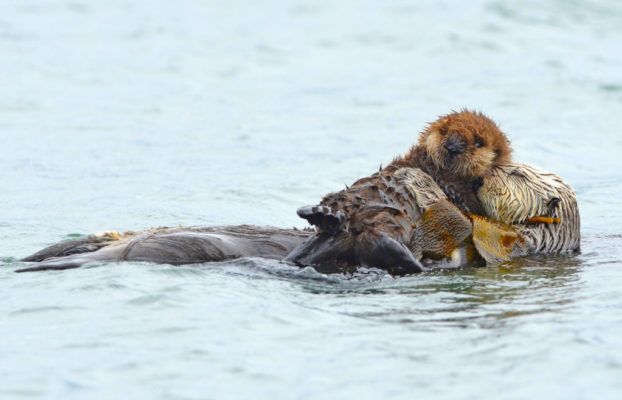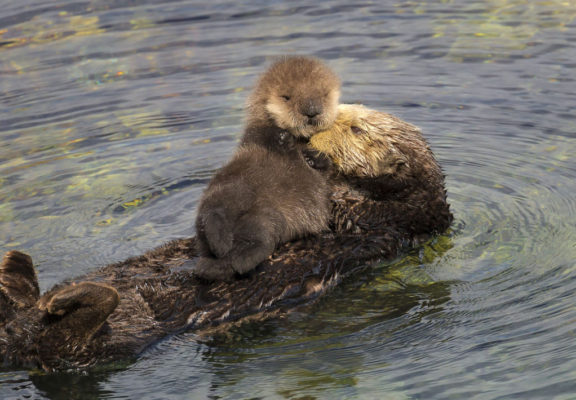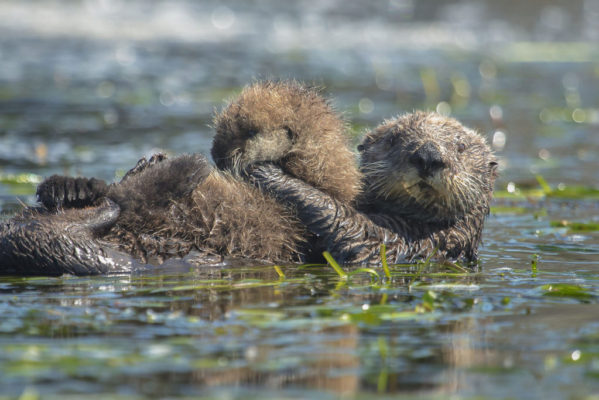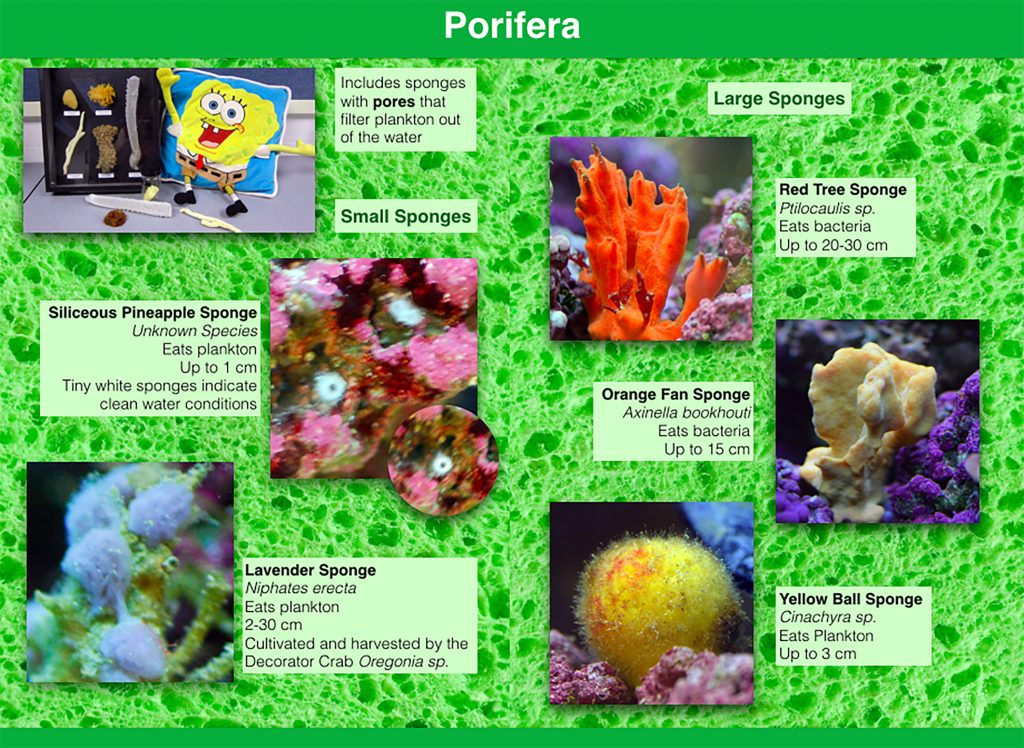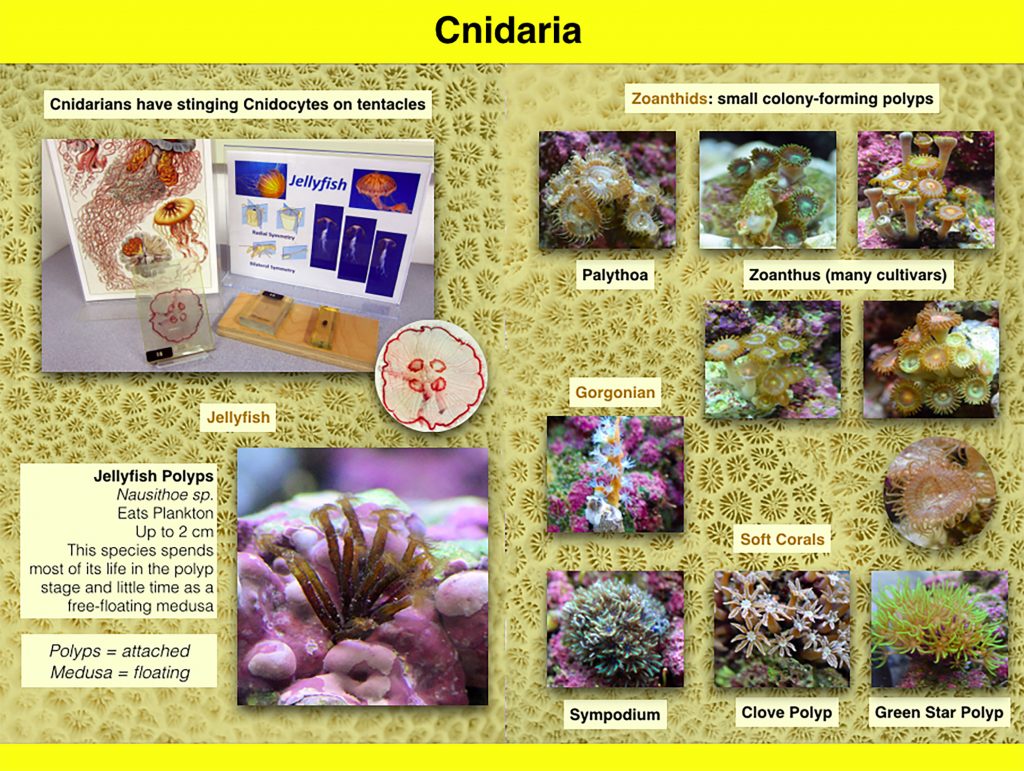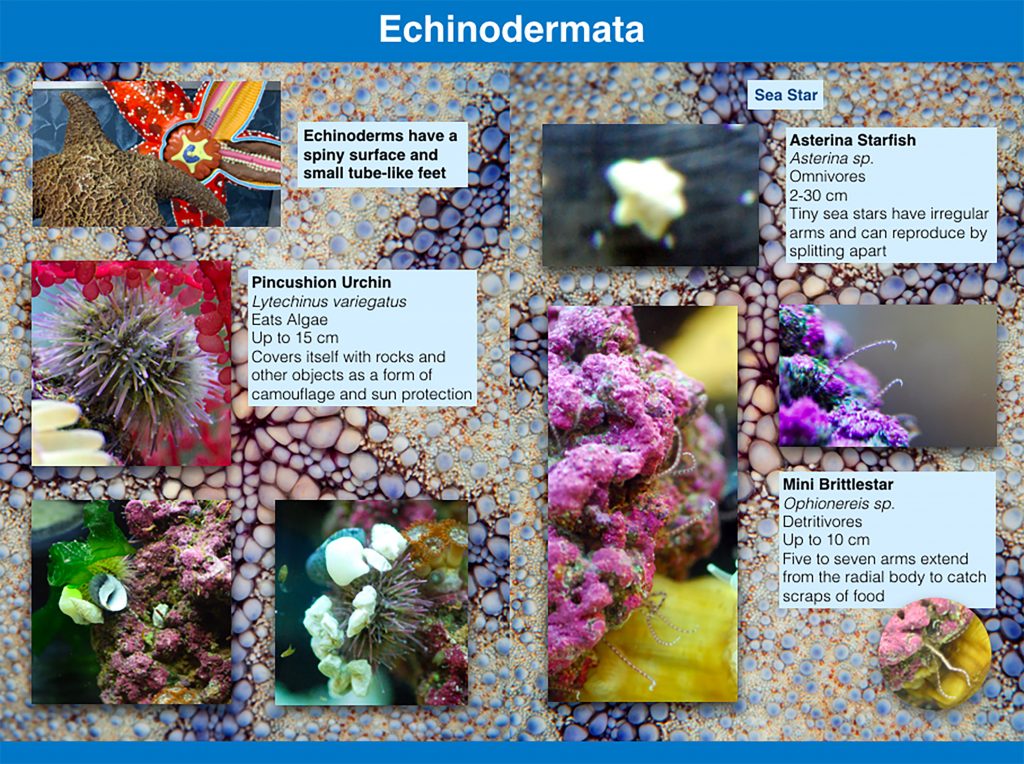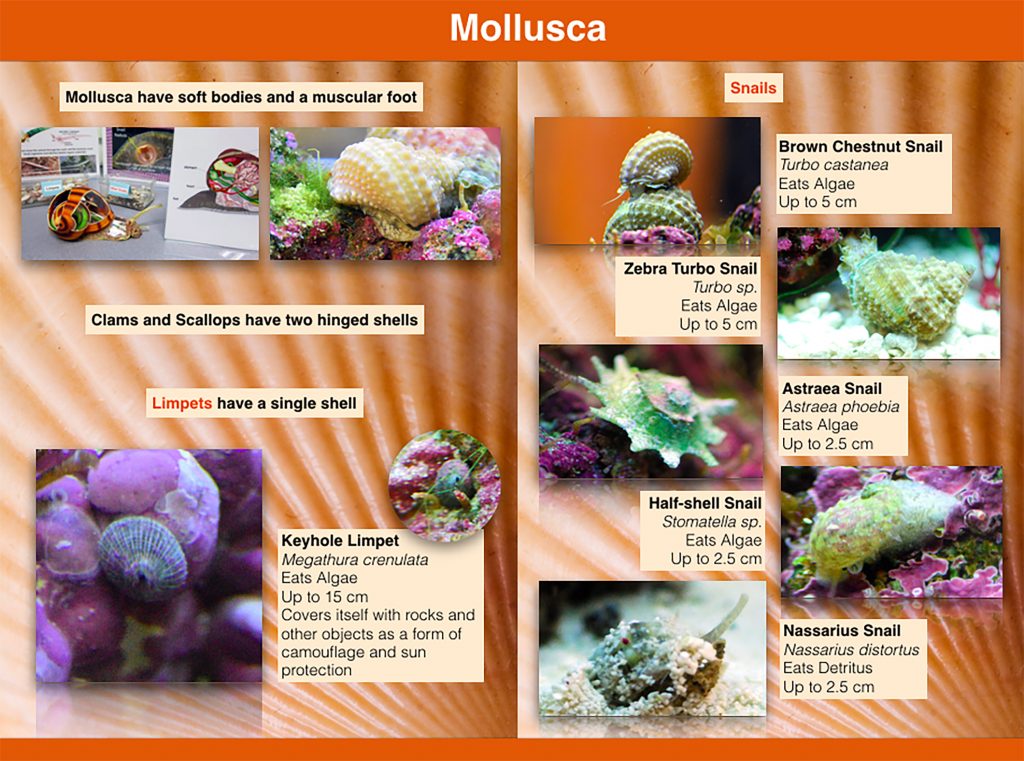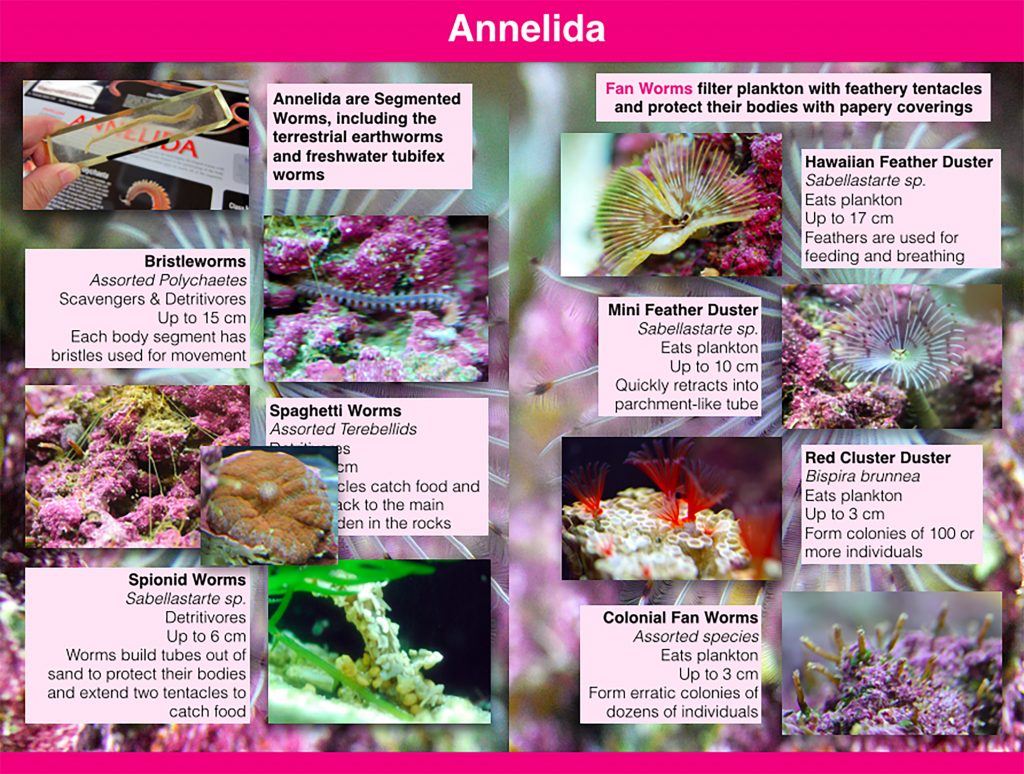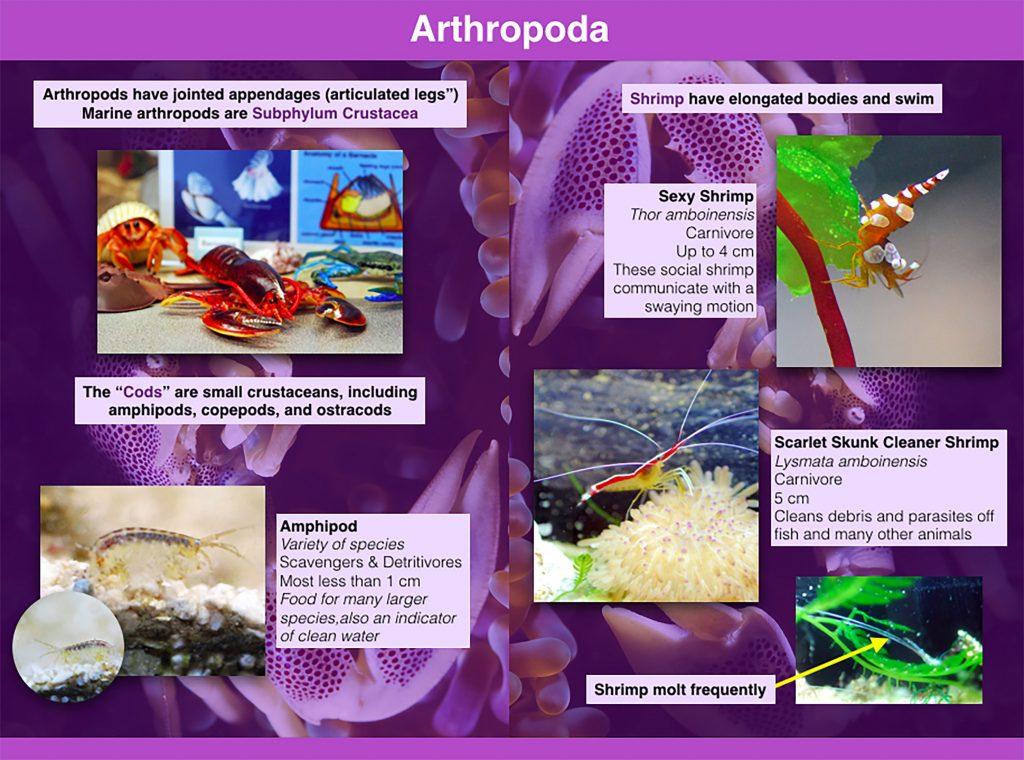
Reefs & Shores Abundant Ocean Life

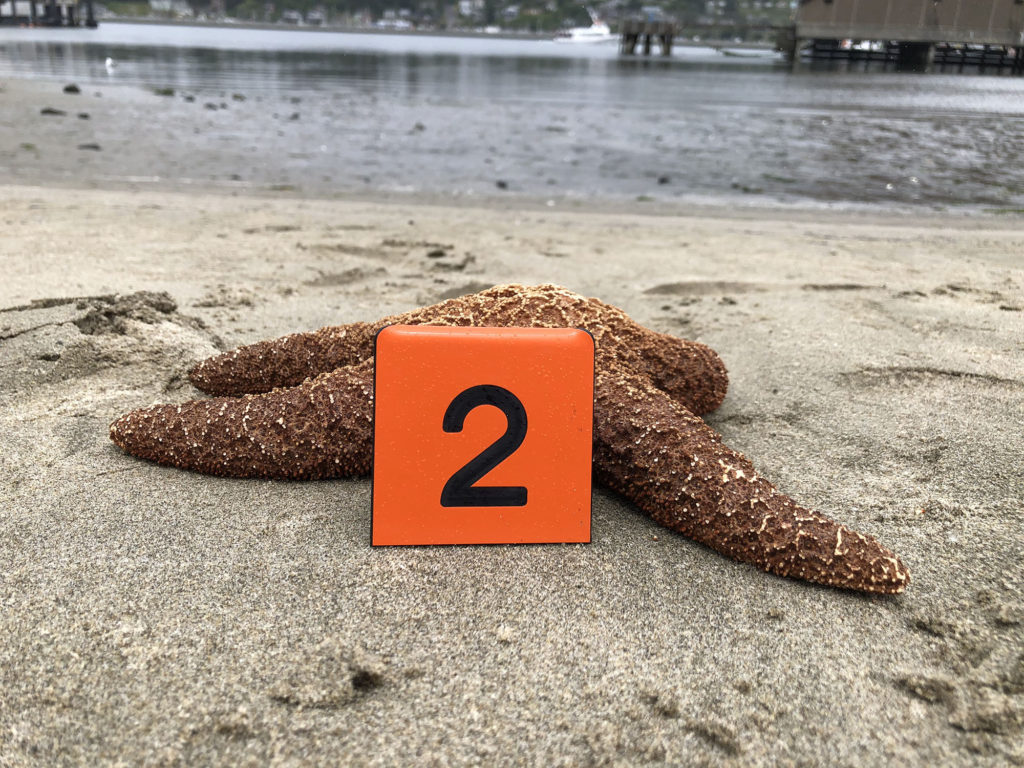
Reefs & Shores Objectives
-
Describe the relationship between corals and zooxanthellae and explain the process of “coral bleaching.”
-
Explain the relationship between kelp, sea urchins, and sea otters in a near shore habitat and define what a keystone species is and provide examples.
-
Describe the risks to organisms in the tidal zone and explain how (and why) life survives in tidal zones.
Coral Reefs

Coral reefs are found in warm and shallow waters and have high biodiversity despite being surrounded by relatively nutrient-poor oceanic water.
The nutrients are located in the bodies of the organisms, living and dead.
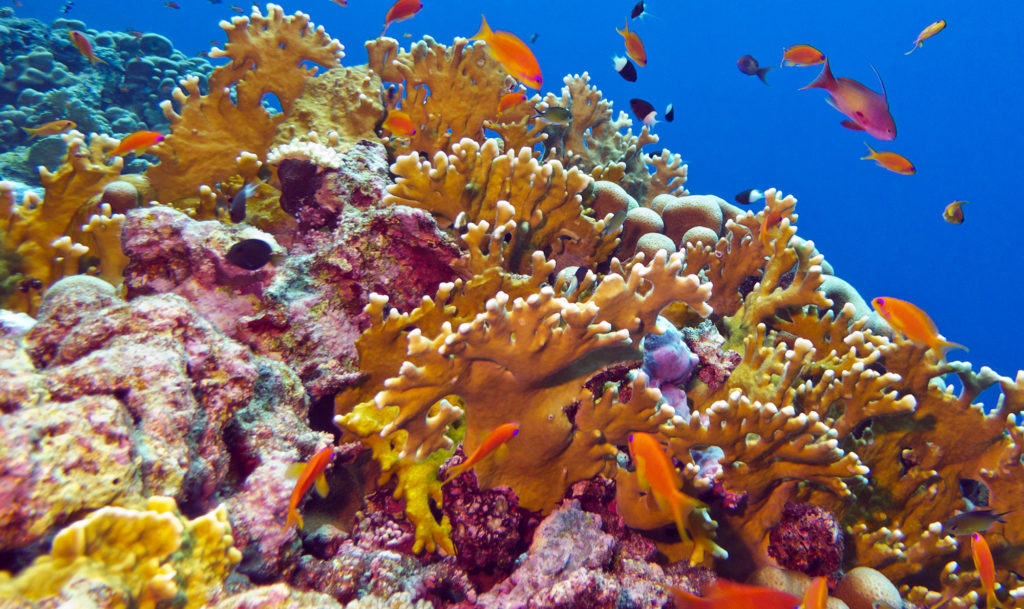
Coral reefs are built upon the dead mineralized remains of coral animals. Live corals live on the surface, supporting a wide range of organisms. In a sense, coral animals are analogous to grasses in a grassland or trees in a forest.
Coral reefs are often covered with colonies of different species of live coral animals. They catch plankton out of their water with tentacles. Corals are cnidarians and have stinging nematocysts on their tentacles that help them immobilize their prey.
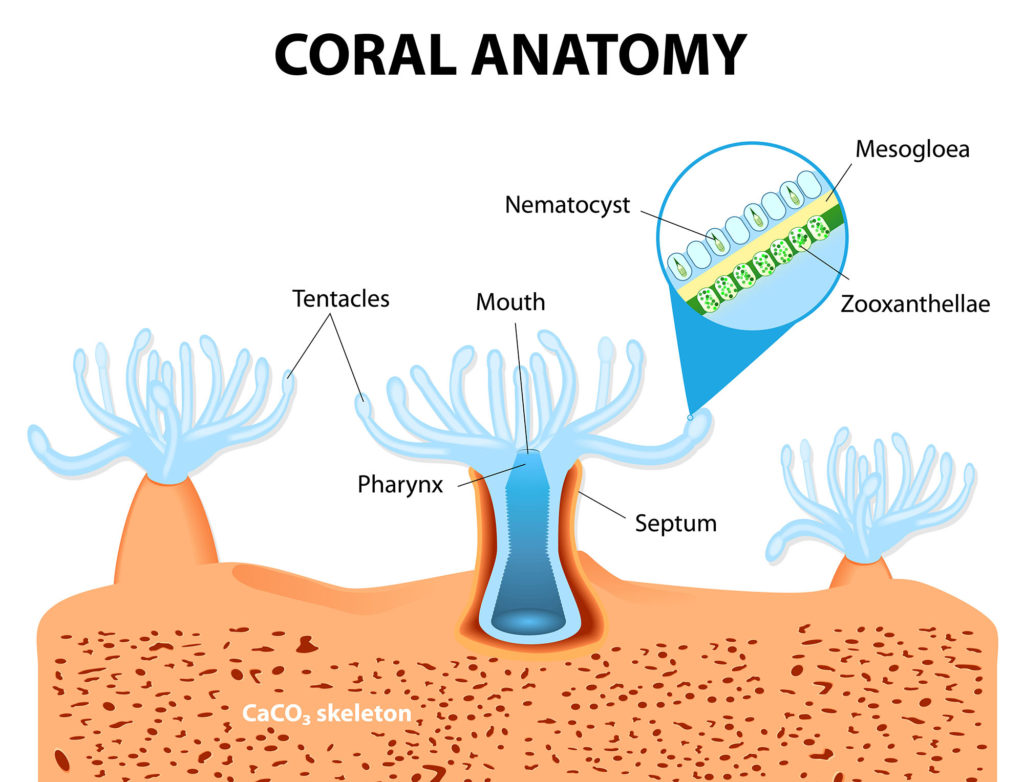
All of these videos show different types of coral animals. Each species has tentacles to grab prey and a mouth for feeding and eliminating waste. Some of the corals look a lot like anemone species. Some clown fish host either.
Coral animals have microscopic protists called zooxanthellae living inside of them.
Zooxanthellae are dinoflagellates, a group of protists that are photosynthetic and can move through water with two whip-like structures called flagella.
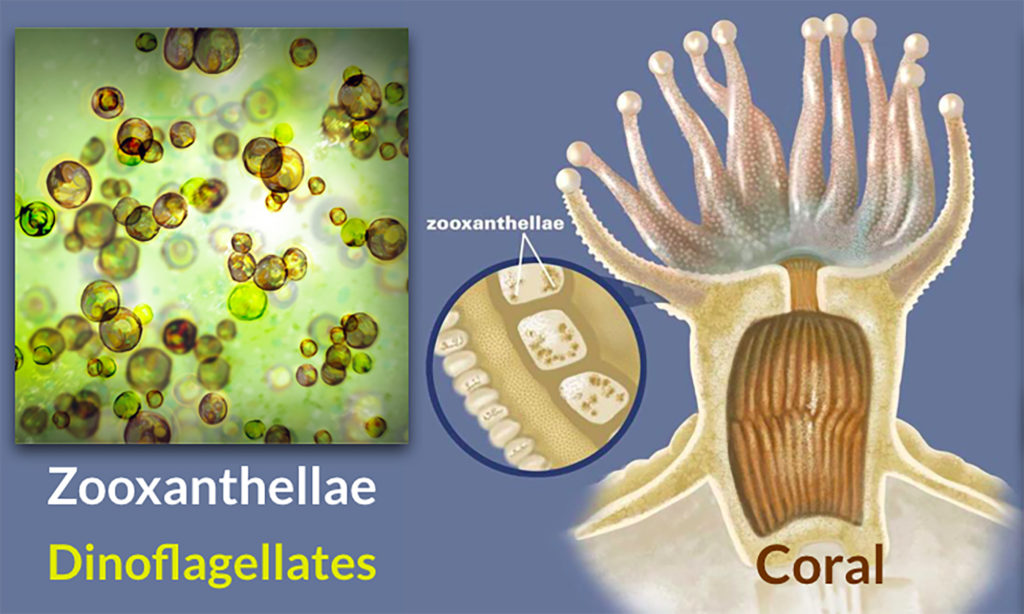
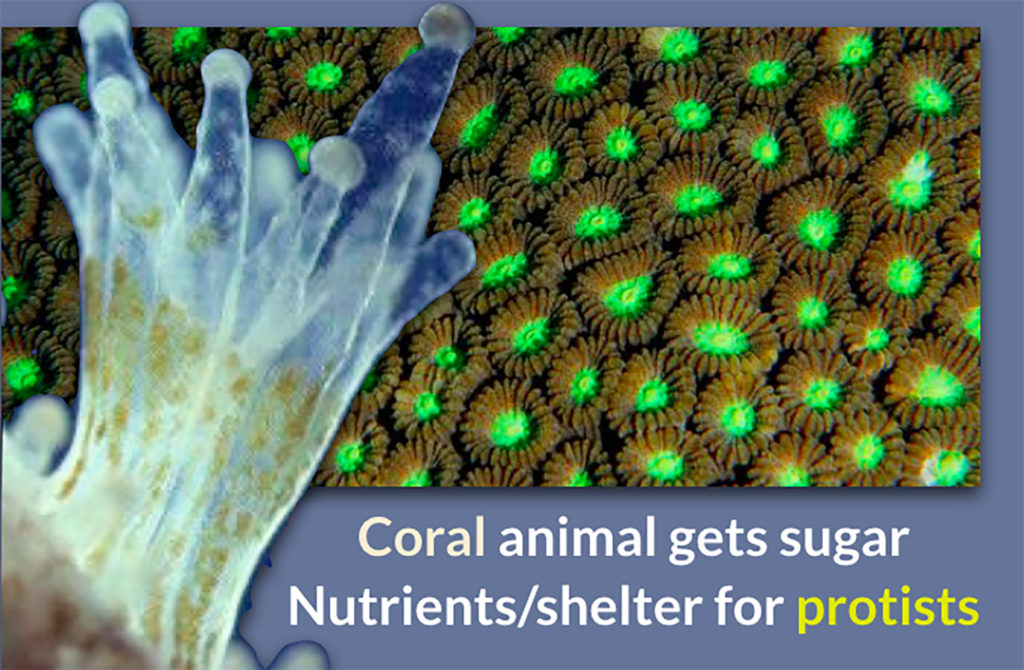
The coral animal gets sugars from the zooxanthellae, and the smaller protists get nutrients from the coral and a place to live. What is the name for this win-win relationship?
Answer: mutualism, or
mutualistic endosymbiosis
Changes in environmental conditions can reduce zooxanthellae in corals, leaving the coral animals pale and unhealthy.
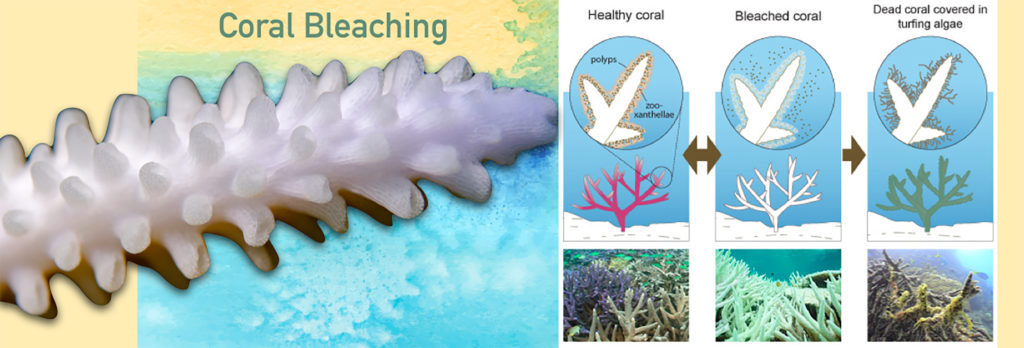
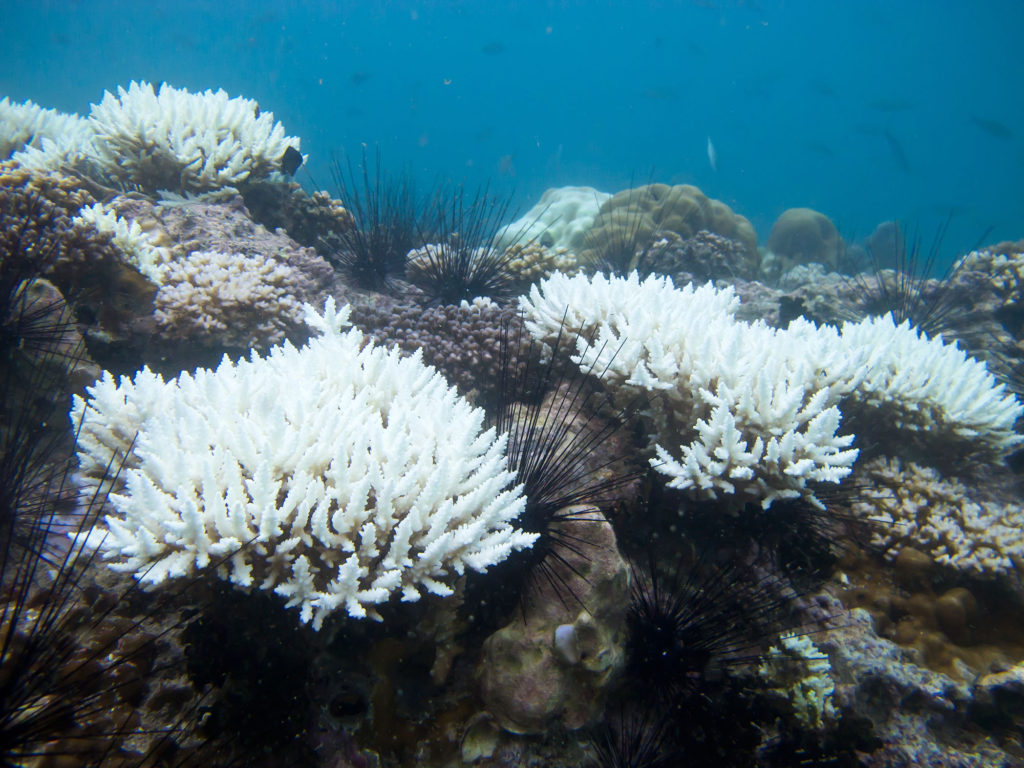
Dead or dying coral can become covered in algae, leaving it unlikely the colonies of coral animals will recover.
Many factors impact the mutualistic coral-zooxanthellae relationship, including water temperature, pH, nutrients, and fishing practices (explosives, nets).
Other coral reef organisms like this anemone can lose their photosymbionts and “bleach” over time.
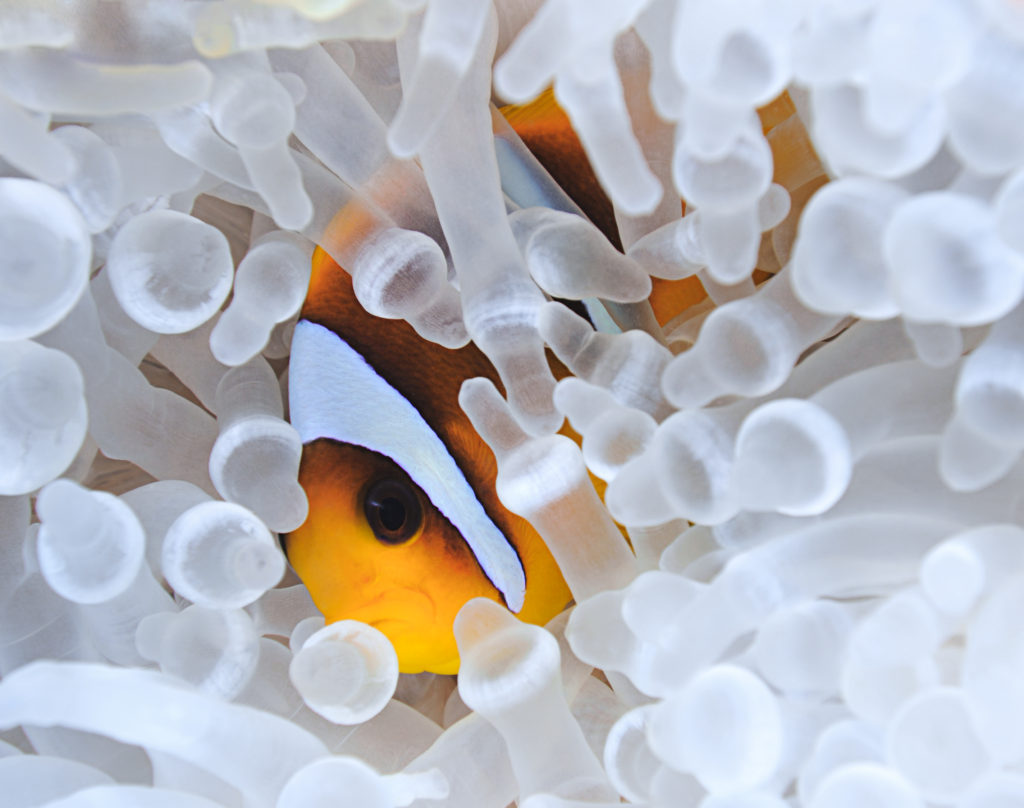
Kelp Forests
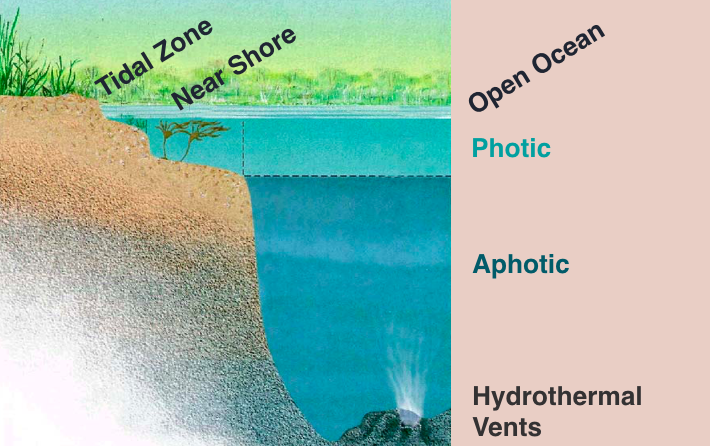
Near shore areas are typically shallow and sunlit, but always under water, unlike the tidal zone. Coral reefs are warm near shore areas often located around islands or coasts close to the equator. In colder regions, kelp forests dominate.
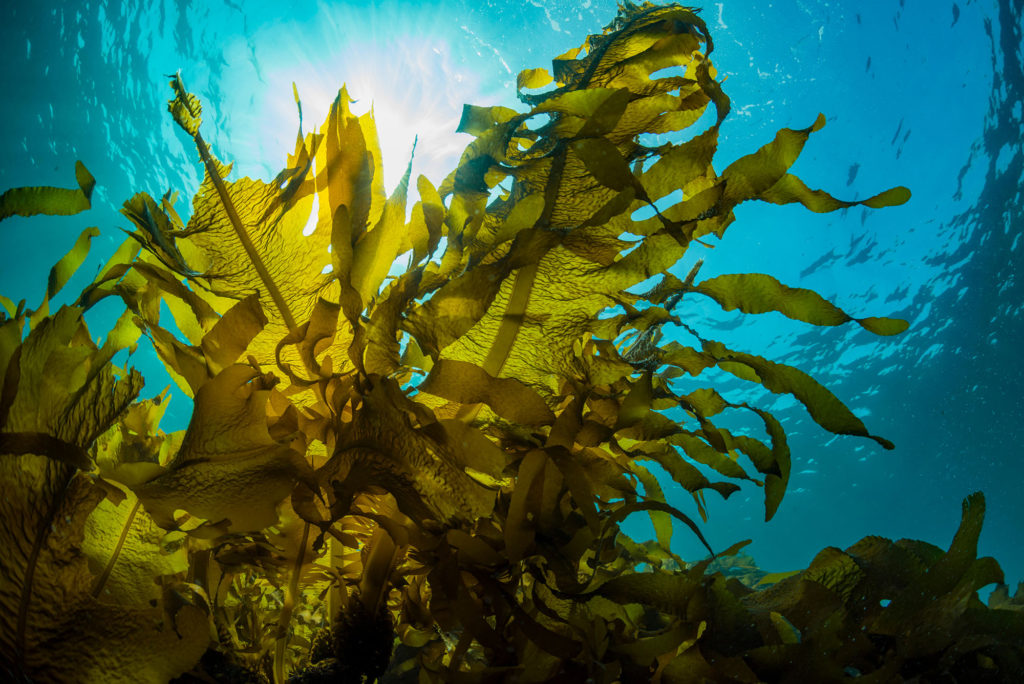
Kelp and other “seaweeds” look like plants until you notice you can see right through their “leaves” and that they lack the structures we associate with plants.
Kelp are eukaryotes, but they are classified in Kingdom _____ instead of Kingdom Plantae.
Kelp can adhere to rocks with a “holdfast” structure, but these can be broken free by strong waves and we often see kelp washed up on our Oregon beaches after a storm.
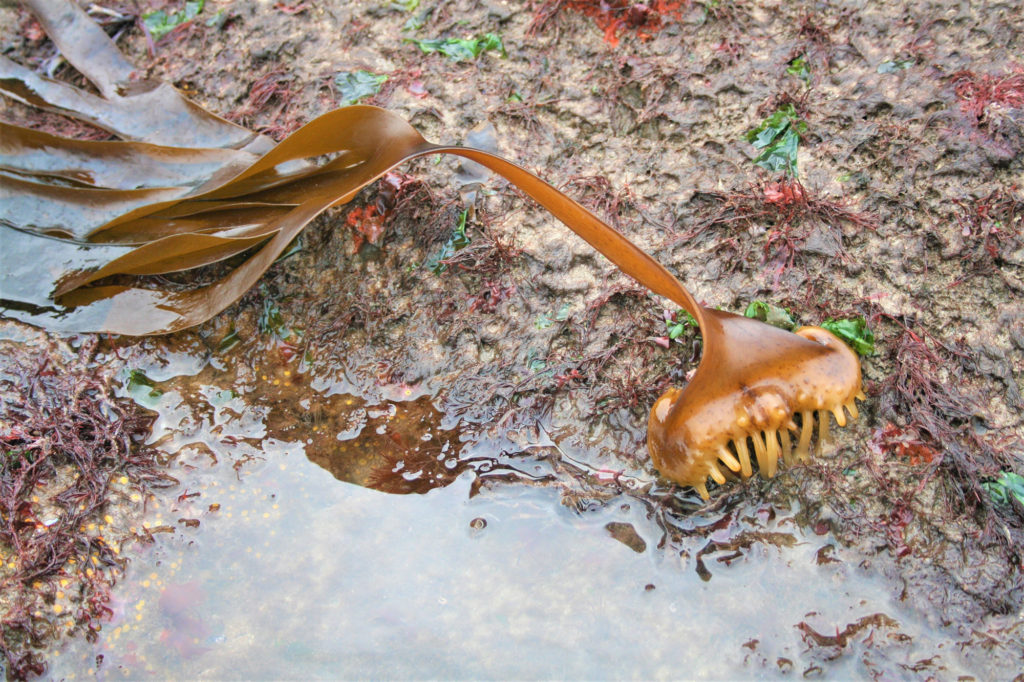

Submerged kelp forests are located off many coastlines, including the coast of the Pacific Northwest.
Prior to excessive hunting, sea otters lived in kelp forests off coasts of northern California, Oregon, and Washington. Now small numbers are found off Washington and more off the coast of British Columbia.


Sea otters ate sea urchins, and sea urchins are herbivores that can eat kelp. In areas without sea otters, the urchins can significantly overeat the kelp.
The removal of the sea otters had unintended results that cascaded through near shore food webs.
Kelp protect sea otters and their young, and indirectly the sea otters benefit the kelp.
Tide Pools
Scoured out rocks can create pools of water when the tides recede. The tide pools (also called tidal pools) may provide wet conditions for organisms, but there are also risks associated with living in these pools.
From your experiences and/or the videos, what risks can you think of?

Despite harsh conditions, tidal pools have the ingredients for life: water, sunlight, and nutrients.
Organisms in tidal pools face significant threats. Along sandy shores, organisms can dig into moist sand. In rocky tidal pools, animals have ways of retaining moisture at low tide.


Hermit crabs have protective shells, barnacles have mineral structures that retain moisture.

Some of the best known organisms of near shore and tide pool habitats are the sea stars.
Along the Oregon coast Pisaster ocheaceus is shades of purple, brown, and orange are found in many tide pools at low tide.


A disease killed massive numbers of pacific coast sea stars in this decade, and this had an unexpectedly significant impact on other tidal pool species.
A keystone species has a disproportionately large impact on its community, even if it does not have a high biomass.
Loss of sea stars caused the animals they ate to increase dramatically in number, and this effect cascaded through the food web, changing the community significantly.
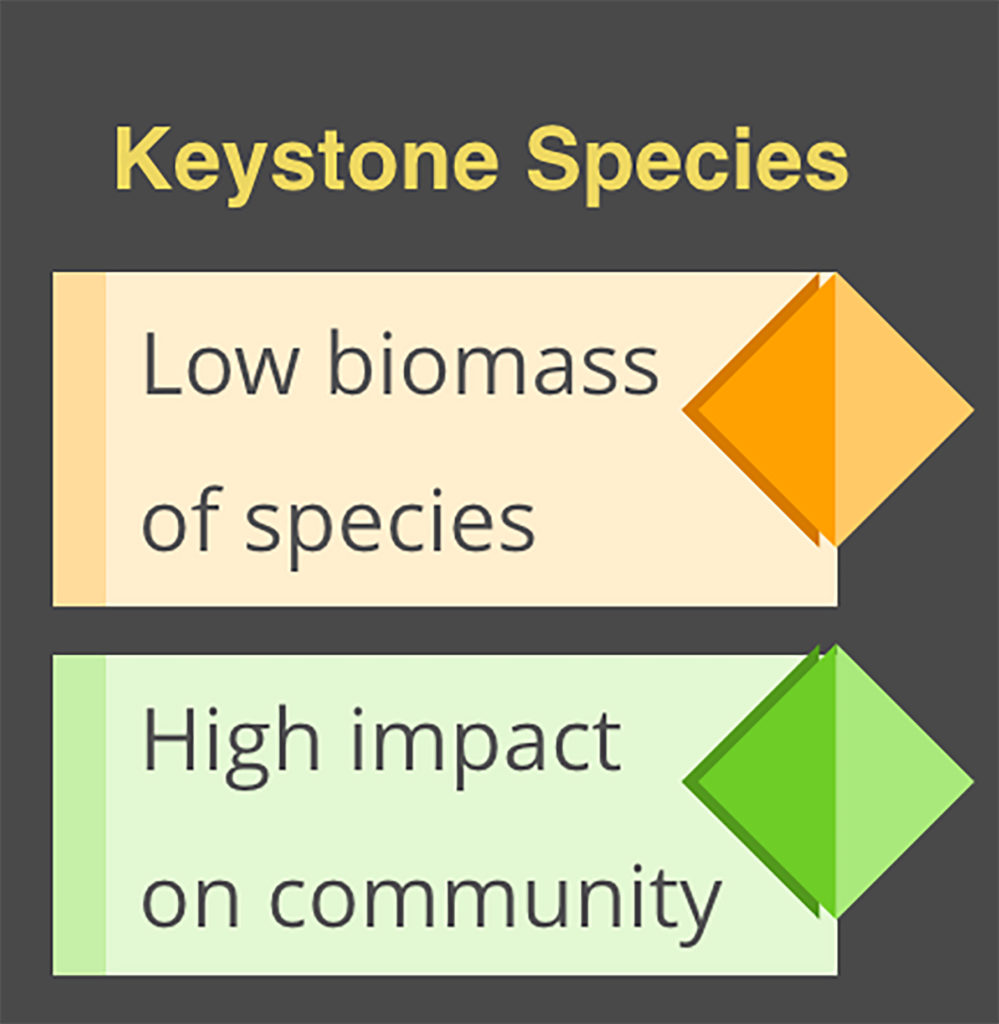
The sea otter is an example of a keystone species. Sea otters had a relatively low biomass, but a significant controlling impact on its food web.

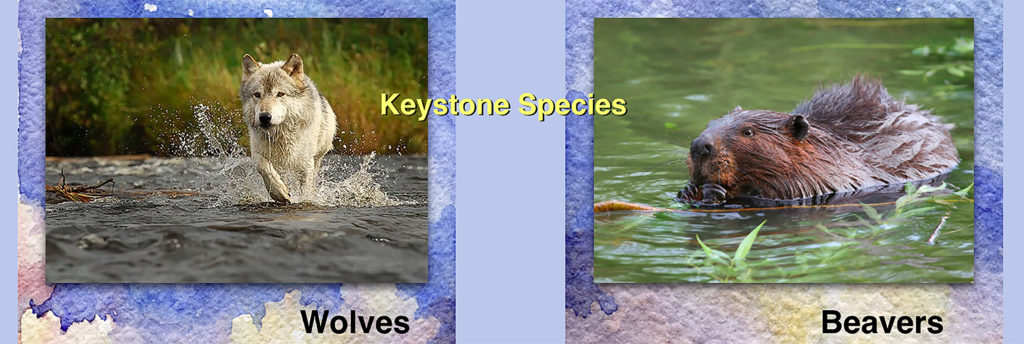
Examples of terrestrial keystone species that have large impacts on their communities are wolves who alter the behaviors of herds of deer and other prey; and beavers who can create an entirely new landscape and community.
Marine Invertebrates
Whether you are exploring a tide pool along the coast, snorkeling in a coral reef, or setting up a saltwater aquarium at home, marine invertebrates are the diverse and attention-grabbing animals of ocean habitats.
For the next journal page, you will be observing video of marine invertebrates, sketching them, and identifying which Phylum of animals they belong to.
This video introduces marine invertebrates you are likely to encounter.
Select the tab of each invertebrate phylum for additional information
Phylum Porifera
Porifera (pronounce: pore-if-er-a) are commonly called the sponges. These are structurally simple animals with no distinct organs. Porifera means “pore-bearing,” and the pores are openings through which water and the microorganisms they eat enter, and wastes leave.
Start this Guide’s first journal assignment here
Journal Page #11: Marine Invertebrate Observations
When we head to aquaria or marine destinations, it is often easier to observe the large vertebrate animals. For this journal page you will be focusing on the species that make up the vast bulk of marine animals, the invertebrates.
From the videos provided below, find five different invertebrate animals.
-
provide the letter of the video you found the animal in (a, b, c, d, e, and/or f). You can use all of the videos or just a few.
-
include notes on the animal, this could be a loose sketch and/or written notes.
-
identify the phylum the animal is classified in and the most likely common name. For example: you may find a brittlestar classified in Phylum Echinodermata. We have provided a photo guide below to assist with identification.
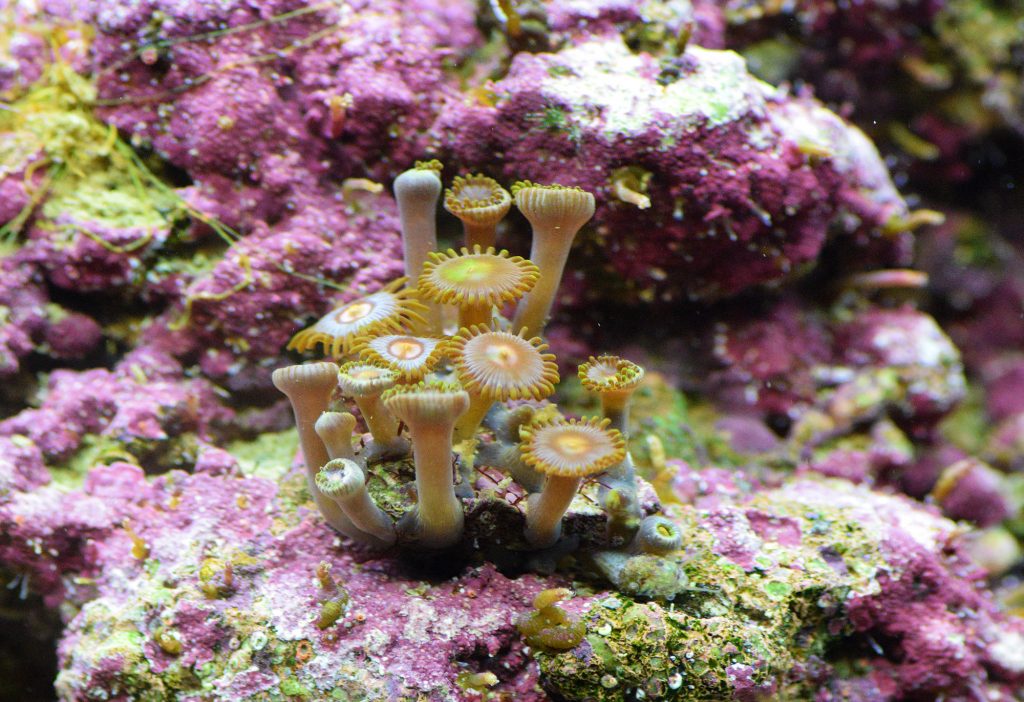
To summarize, you are submitting an identification of five different types (species) of marine organisms you find in the videos, including (a) the letter of the video it was in, (b) brief notes, and (c) its Phylum and common name.
You can use this key to help with identification.
These are a few of the species we’ve found in the tank, organized by Phylum.
These are the videos you are using for the media piece. Each video was taken in a different part of the tank.
You are looking for and identifying five different invertebrate animals. There are multiple species in each video.
You may want to expand each video and it may take a few minutes to see the animals.
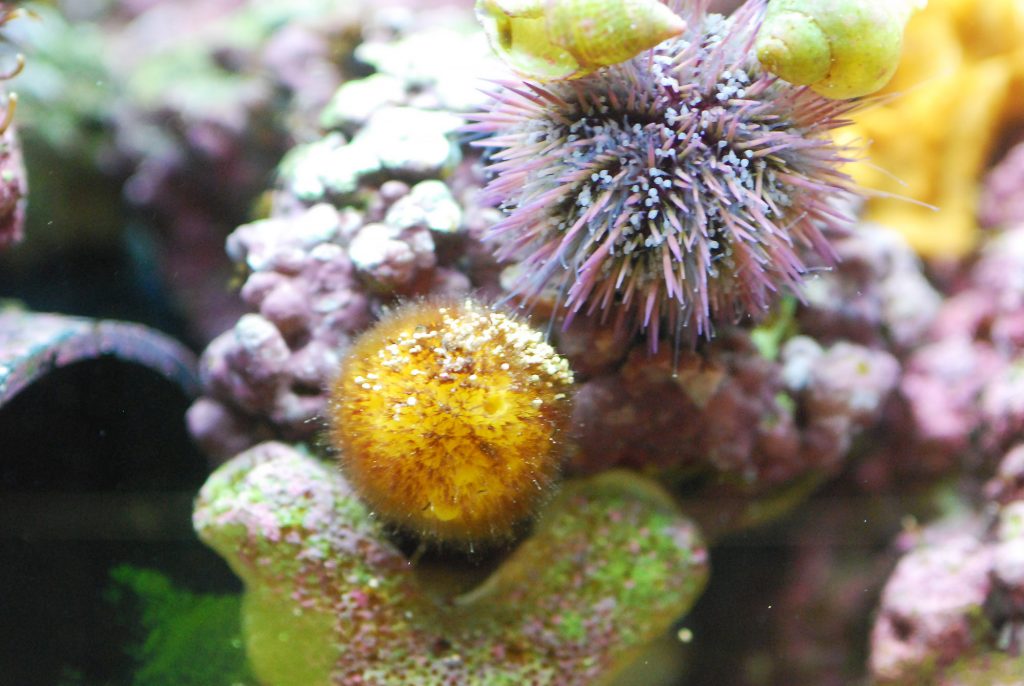
The tank in these videos is 18 months old. It was stocked with “live rock” from other tanks and a variety of small corals.
Tank Parameters:
- 30 gallons,
- 77 degrees Fahrenheit
- 10% water change weekly
- Food added: phytoplankton for corals & pellets for clownfish and shrimp
The next section is a general overview of Earth’s climate, which is a major factor impacting life in aquatic and terrestrial habitats.
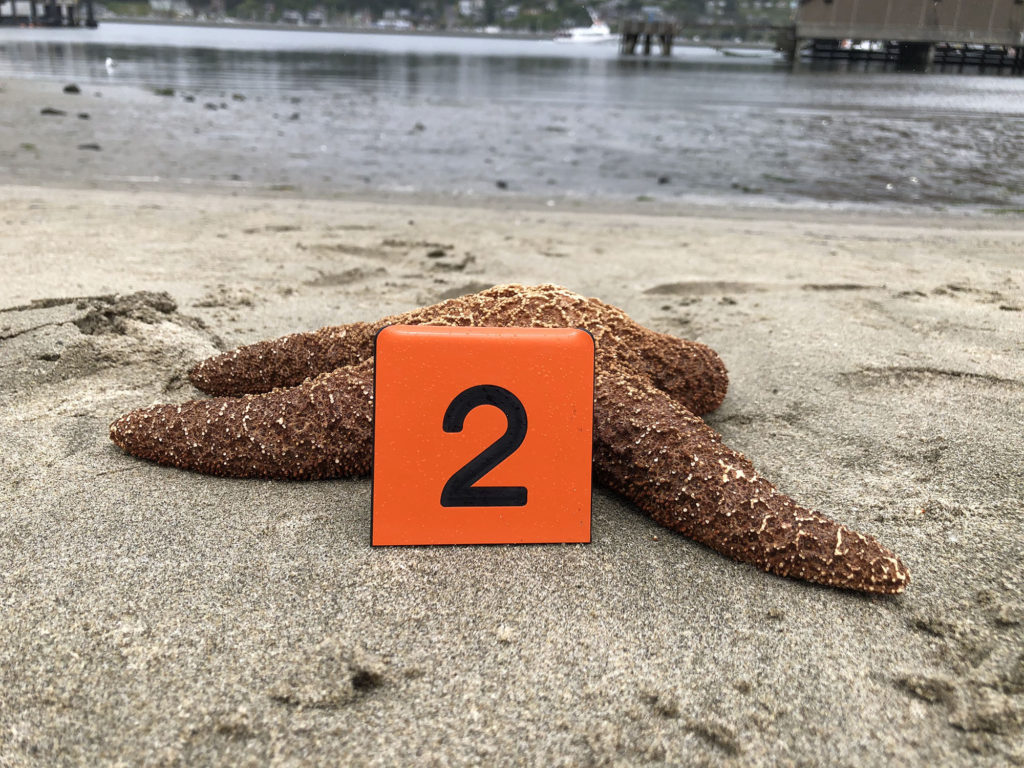
Check your knowledge. Can you:
-
describe the relationship between corals and zooxanthellae and explain the process of “coral bleaching?”
-
explain the relationship between kelp, sea urchins, and sea otters in a near shore habitat and define what a keystone species is and provide examples?
-
describe the risks to organisms in the tidal zone and explain how (and why) life survives in tidal zones?
